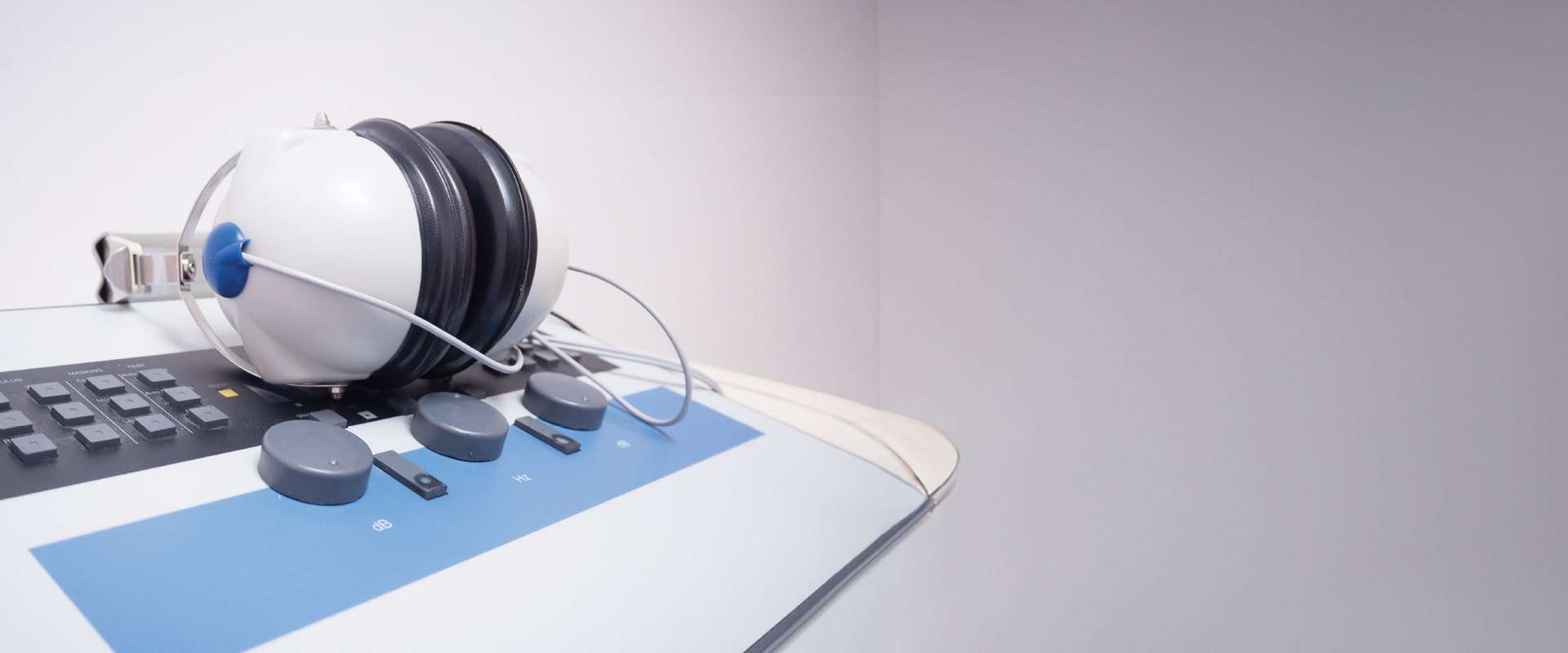By James Peck
This article is a part of the July/August 2019, Volume 31, Number 4, Audiology Today issue.
The Problem
Most audiologists probably have encountered a patient who produces within- or among-test discrepancies in audiometric results that have no medical explanation. This phenomenon goes under a multiplicity of terms. In addition to pseudohypacusis, nonorganic hearing loss, and functional hearing loss, there are malingering, dis/simulating, faking, feigning, conversion, hysterical, psychogenic, and more.
These terms are often used as if they describe the same condition, yet they are hardly interchangeable. Some imply a mental disorder; others, a fabrication; and still others, a supposedly unexplainable true loss. Furthermore, some clinicians may use these words to cast doubt on the existence of a hearing loss. Inevitably, misunderstanding and confusion must follow.
What all of these words do have in common is the sense that audiometric results purporting to show hearing loss have some inconsistencies and are of questionable validity.
The Goal
The goal of this essay is to arrive at a single term or phrase that unites the central meaning of those labels above. Given the likelihood of confusion from having several terms, it seems highly desirable to have one term that indicates the core meaning and only that meaning. A single expression would confer a greater degree of cohesion in clinical communication, professional literature, research, and management.
Review of Common Terms
Nonorganic
A nonorganic disorder is one affecting the function, but not the structure, of an organ (Dorland’s Medical Dictionary for Health Consumers, 2007). As applied to hearing, a nonorganic hearing loss means an apparent hearing deficit in the absence of anatomic and/or physiologic explanation (Mendel et al 1999; Stach, 2019).
Functional
Functional is synonymous with nonorganic, specifically a disorder of function with no known organic basis (Dorland’s Illustrated Medical Dictionary, 2003). Thus, a functional hearing loss is one that lacks any organic lesion (Mosby’s Medical Dictionary, 2009) or physiologic basis (Mendel et al 1999).
Notice that the terms nonorganic and functional do not mean the absence of any physical problem. Instead, they refer to the opposite sides of the same condition. The organ in question is not functioning properly, but the organ has no sign of structural defect or disease. Whatever the problem is, it’s not the organ. It’s the function. Ergo, nonorganic and functional.
Consider two examples. Nonorganic failure to thrive refers to a baby that does not gain weight despite adequate nourishment, not from some organ failure but because of psychosocial disruptions within the family and extreme emotional neglect (Erikson and Egeland, 2002). Irritable bowel syndrome—one of several functional gastrointestinal disorders—is a genuine and distressing condition in which there is no primary disorder of the gastrointestinal system. Clearly, neither nonorganic nor functional in these examples means that there is no problem. Instead, they mean there is no problem in the organs, themselves, but rather in how the body is functioning.
In practice, audiologists define nonorganic or functional hearing loss in a way quite similar to that of Ventry and Chaiklin (1965, p. 179): “Functional hearing loss may be defined operationally as the presence of [within- or among-test] discrepancies in audiometric results that are not explained by medical conditions known to be the cause of audiometric discrepancies.” When faced with discrepant audiological findings, as evidenced by an extensive literature, audiologists have very often used these two qualifiers to indicate that there apparently is little or no hearing loss. To wit: “The loss either does not exist at all or does not exist to the degree that is indicated” (Roeser et al, 2000, p. 237).
At times, authors use functional hearing loss as if it were an actual category of hearing loss (Noble, 1978). The assertion that these words are used to mean little or no hearing loss is supported by instances in which behavioral audiometric measures suggest that there is a hearing loss, but objective audiometric measures indicate that there is no hearing loss. Another case in point is a so-called nonorganic or functional hearing loss that disappears or resolves upon retesting—even in the same session—as demonstrated by normal behavioral thresholds.
To conclude, the terms nonorganic hearing loss and functional hearing loss are incongruous because they describe a loss that does not exist (or does not exist to the extent claimed).
Hence, it is illogical to say that a hearing loss is nonorganic or functional, when the “essential quality is precisely that it is not a hearing loss” (Noble, 1978, p. 228).
Malingering
Although highly specific, malingering is sometimes applied as if it were a general term covering these various sorts of losses. The essentials of malingering are (American Psychiatric Association, 2013):
- The intentional production of
- False or exaggerated physical or psychological problems for
- A secondary gain (e.g., getting money, avoiding an unpleasant task)
Feign, Simulate
Feign and simulate are essentially the same as faking (i.e., intentionally misrepresenting or giving a false appearance). A person with normal hearing could knowingly feign (or simulate) a hearing loss by presenting a nonexistent impairment. Note that this also applies to normal-hearing persons who have been instructed to simulate/feign a hearing loss as part of a study about false loss.
Along with malingering, the words feign, simulate, and other similar terms have two crucial flaws. First, these words could be construed as implying lying, a determination that is not within the role of an audiologist. Second, they deal with what is in a patient’s mind, but no audiological assessment can determine state of mind. Thus, such words have little or no merit in audiology.
Psychogenic, Conversion
Psychogenic means originating in the mind, and psychogenic disorder signifies a disorder that is due to mental or emotional conflict with no medical organic explanation. Nowadays, such a disorder would likely be classified as a conversion disorder, in which psychological stresses appear as (are converted into) neurological symptoms. There is no willful intent to deceive and the need is internal rather than external. A psychogenic/conversion disorder does not affect the function of the organs, but rather, the way a person behaves. Determining intent and the locus of need are beyond audiology, so these words are best avoided altogether.
Pseudohypacusis
The word pseudohypacusis, derived from the Greek language, means false hearing loss. Pseudohypacusis has been defined in various ways, often by just about every one of the above terms. Although pseudohypacusis has no standard definition, it has been used to denote when a person responds to stimuli “only at levels well above their true organic thresholds” but without “implying an underlying causal factor” (Olsen, 1991, p. 40). Its advocates prefer pseudohypacusis because “it clearly signifies the condition of a false (pseudo), less than normal auditory sensitivity, (hypoacusis or hypacusis)” (Rintelmann and Schwan, 1991, p. 606).
This writer found about three dozen pseudo disorders. Two examples are pseudopapilledema, which is a swollen optic disc caused by increased intracranial pressure that resembles papilledema, but there is no papilledema, and pseudoparalysis, a voluntary restriction or inhibition of motion because of pain, incoordination, or other cause, but there is no muscular paralysis. By analogy, pseudohypacusis means having the appearance of a hearing loss, but there is no hearing loss.
To recap this section on common terms, nonorganic and functional are inappropriate because they are often misused to describe a hearing loss that does not exist. Malingering, feign and simulate denote purposeful intention—the state of mind—which is not the province of audiology. Similarly, psychogenic and conversion disorder are matters of mental status and thus are psychological, not audiological, concerns. In contrast, pseudohypacusis avoids all those shortcomings and merely identifies the essential point: falseness of a hearing impairment.
Literature, Lines of Reasoning, and Logic
The author reviewed some 93 articles containing in the title any of the various above descriptors. Those reports and studies had in common that most patients ultimately had little or no hearing loss. Overwhelmingly, the articles indicated that inconsistencies meant invalid responding, rather than some peculiar, vague hearing loss. Descriptive terms were commingled with supposed etiologies. That is, the label was not verified by evidence of conscious intent, some nonorganic process causing the production of invalid results, or psychopathy.
What those descriptors do share is the idea that the audiometric results purporting to show hearing loss have some inconsistencies and/or are of questionable validity. If a patient’s presentation is consistent in all ways—history, behavior out of the test room, response behavior during audiometry—a hearing loss is never suspected of being false or even exaggerated. The loss is only suspect when the results have some discrepancy or don’t add up.
A point worth considering is that a person’s false hearing loss does not necessarily begin in the test booth. It begins whenever the individual first forms the notion of having, or alleging, a hearing impairment, regardless of that individual’s motivation. Persons who malinger, or who have a conversion disorder or a factitious disorder1 by definition do not adopt the idea of having a hearing loss only when the earphones are put in place. They come into the session already claiming that they have a hearing loss. There are probably other patients who have not thought of themselves as having a hearing loss, but for unclear reasons respond invalidly. Regardless of time of onset, it may be said that, in a sense, the inconsistent test results become the hearing loss in the eyes of the clinician.
A thought-provoking and relevant piece of logic comes from Rintelmann and Harford (1967). They asserted that the Type V Bekesy pattern2 is ipso facto invalid, in that a valid responder will respond at genuine threshold to continuous and pulsed tones at the same dB hearing level. In contrast, at a level above true threshold, as a matter of psychoacoustics, a continuous tone sounds louder than a pulsed tone, such that a person responding at suprathreshold levels will plot lower thresholds for the continuous tone—a Type V. To Rintelmann and Harford, a Type V Bekesy means only one thing:
During Bekesy threshold tracings, “the subject has not performed the auditory task according to instructions, no matter what his motives are” (Rintelmann and Harford, 1967, p. 742).
Discrepancies in audiometric responses, such as varying pure-tone thresholds or poor pure-tone speech-recognition threshold (SRT) agreement, also do not align with psychoacoustics. Thus, if one accepts the above assertion, then, substituting audiometric inconsistencies for Type V Bekesy, one must accept the following assertion:
During pure-tone and speech audiometric testing, “the subject has not performed the auditory task according to instructions, no matter what his motives are.”
In other words, the test results are wrong. The elevated thresholds are false. There is no hearing loss or, at the least, one does not know if there is any hearing loss. It is not surprising then that objective measures, such as otoacoustic emissions and auditory-evoked potentials, strongly indicate that hearing is far better than represented and quite probably not impaired at all. That is also why clinicians say there is no explanation or any evidence of an organic basis for the loss.
It is as though we view the audiogram’s Xs and Os and the SRT values as a hearing loss. Audiological results are merely written representations of a person’s behavior, namely, hand raising or word repeating. They do not represent a biological reality. Yet, at times an audiogram is regarded with the same frame of mind as an x-ray. The x-ray is status; the audiogram is behavior.
An audiogram is not like a CT scan or a urinalysis, which are not influenced by the person’s mental state. An audiogram is not even a depiction of hearing, unless the patient is following the instructions properly and responding validly. The coup de grâce in so much of the literature is in the follow-up testing, when the person responds voluntarily to tones and speech well within normal limits.
False and Exaggerated Hearing Loss
As said at the start, there is a perplexing assortment of terms to describe audiometric results that are inconsistent and questionable. The goal here was to identify a term or phrase to capture the essential meaning of the several labels, to achieve greater uniformity.
Pseudohypacusis seems the best fit of the words reviewed, but it is rather long and technical. Therefore, this writer advocates using straightforward language: false hearing loss. For those situations when it is believed that there is a co-existing organic hearing loss, exaggerated hearing loss is appropriate. Combining both scenarios, this writer uses false and exaggerated hearing loss (FEHL). Here is the present writer’s definition:
A supposed hearing loss that does not exist or does not exist to the degree presented, regardless of psychological motivation, typified by inconsistencies and discrepancies but lacking medical explanation.
Resistance to Change
When this writer has suggested adopting FEHL, audiologists have been reluctant to do so, even though they cannot fault the logic. They comment that people are accustomed to the other terms and that FEHL is too unfamiliar, so it is safer to stay with a traditional term.
However, there have been a number of examples of changes in audiological terminology:
- Perceptive and nerve loss to sensorineural
- Acuity to sensitivity3
- Speech reception to speech recognition
Other clinical fields also have made changes in their terminology:
- Mental retardation to intellectual disability
- Neurosis to various psychological conditions
- Spastic dysphonia to spasmodic dysphonia
All of these examples suggest that our field is capable of changing the way we label and think about a particular entity, in this case false hearing loss.
The Benefits
Benefits would accrue from adopting a single term or phrase to refer to the topic under discussion. This word or phrase would unify the basic meaning—and only that meaning—of all the other terms, while avoiding their illusion of accuracy and specificity. A distinct expression would allow greater equivalence in clinical communication, professional literature, research, and management.
False and exaggerated hearing loss (FEHL) is the most suitable term. It combines accuracy and simplicity. It is straightforward and avoids using diagnostic terms out of our field. It eliminates the linguistic chaos of diverse meanings and implications: emotional disorder, mental illness, dishonesty, an inexplicable genuine hearing loss, and uncertain existence of a hearing loss in the first place. Most important, the phrase identifies the fundamental quality of what is being described: its falseness.
Endnotes
1 A factitious disorder is one in which a person consciously contrives to have a medical symptom for some unconscious psychological need.
2 Bekesy audiometry is automatic, self-recording of thresholds for continuous and pulsed tones. Normal hearers plot no difference in thresholds for the two kinds of tones—a Type I pattern. Persons with cochlear or neural lesions plot poorer thresholds for the continuous tone at some or all frequencies—Types II-IV. An invalid responder plots poorer thresholds for the pulsed tones—Type V.
3 Sensitivity is the ability to detect a signal, as in absolute threshold, whereas acuity is the ability to distinguish between two similar stimuli, as in differential threshold.
References
American Psychiatric Association. (2013) Diagnostic and Statistical Manual of Mental Disorders. 5th ed (DSM-5). Washington, DC: American Psychiatric Press, Inc.
Dorland’s Medical Dictionary for Health Consumers. (2007) Philadelphia, PA: Saunders. Dorland’s Illustrated Medical Dictionary. (2003) 30th ed. Philadelphia, PA: Saunders.
Erikson MF, Egeland B. (2002) Child neglect. In: The APSAC Handbook on Child Maltreatment, 2nd ed. Thousand Oaks, CA: Sage Publications, 3–20.
Mendel LL et al. (1999) Singular’s Illustrated Dictionary of Audiology. San Diego, CA: Singular Publishing Group. Mosby’s Medical Dictionary. (2009) 8th ed. St. Louis, MO: Mosby.
Noble WG. (1978) Assessment of Impaired Hearing: A Critique and a New Method. New York, NY: Academic Press.
Olsen WO. (1991) Special auditory tests: A historical perspective. In: Diagnostic Audiology. Austin, TX: Pro-Ed, 19–51.
Rintelmann WF, Harford ER. (1967) Type V Bekesy pattern: Interpretation and clinical utility. J Speech Hear Res 10:733–744.
Rintelmann WF, Schwan SA. (1991) Pseudohypacusis. In: Hearing Assessment 2nd ed. Boston, MA: Allyn and Bacon, 603–652.
Roeser RJ et al. (2000) Pure-tone tests. In: Audiology Diagnosis. New York, NY: Thieme, 227–251.
Stach BA. (2019) Comprehensive Dictionary of Audiology: Illustrated, 3rd ed. San Diego, CA: Plural Publishing.
Ventry IM, Chaiklin JB. (1965) Introduction and research plan. J Aud Res 5: 179–190.


